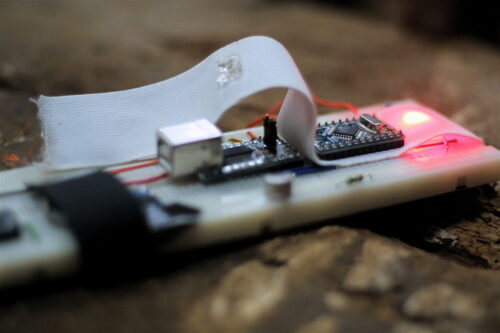Image courtesy of Flickr.
With an increased demand for wearable technology, soft and stretchable circuits have become an essential component to commercial electronics. This demand creates a growing need for electronics that not only conduct high amounts of electricity but also survive wear and tear over time. Professor Rebecca Kramer-Botteglio and her research team, known as the Faboratory, works on developing stretchable, multilayer electronics that can create complex patterns and allow for more advanced nanoprinting techniques. In 2021, she alongside researchers Shangliangzi Liu and Dylan Shah published a research paper investigating biphasic Ga-In and its potential for accomplishing these feats at a smaller size.
Biphasic Ga-In (bGaIn), builds on Gallium-Indium eutectic alloy (eGaIn), a gallium-based liquid metal that, once exposed to oxygen, allows for high conductivity. However, eGaIn’s high surface tension prevents it from being completely flexible, whereas bGaIn combines liquid particles with crystalline solids, allowing for the same amount of conductivity with a greater degree of stretchability.
Kramer-Botteglio’s group formed bGaIn by applying eGaIn onto silicon and then heating and cooling the film until it became hard. Then, to test the features of this new material, they interconnected bGaIn with rigid electrical devices (resistors, microcontrollers, LED lights, etc.) as well as other soft, stretchable surfaces (latex balloons, paper, etc.). In both studies, bGaIn proved to be able to maintain the same level of electrical conductivity as untampered eGaIn under higher amounts of mechanical strain.
Although the full extent of bGaIn’s utility have not been studied yet, the results from the Faboratory show a promising future for various stretchable technology innovations, from the wearable health monitor to the soft robots.
Liu, S., Shah, D.S. & Kramer-Bottiglio, R. Highly stretchable multilayer electronic circuits using biphasic gallium-indium. Nat. Mater. (2021). https://doi.org/10.1038/s41563-021-00921-8

